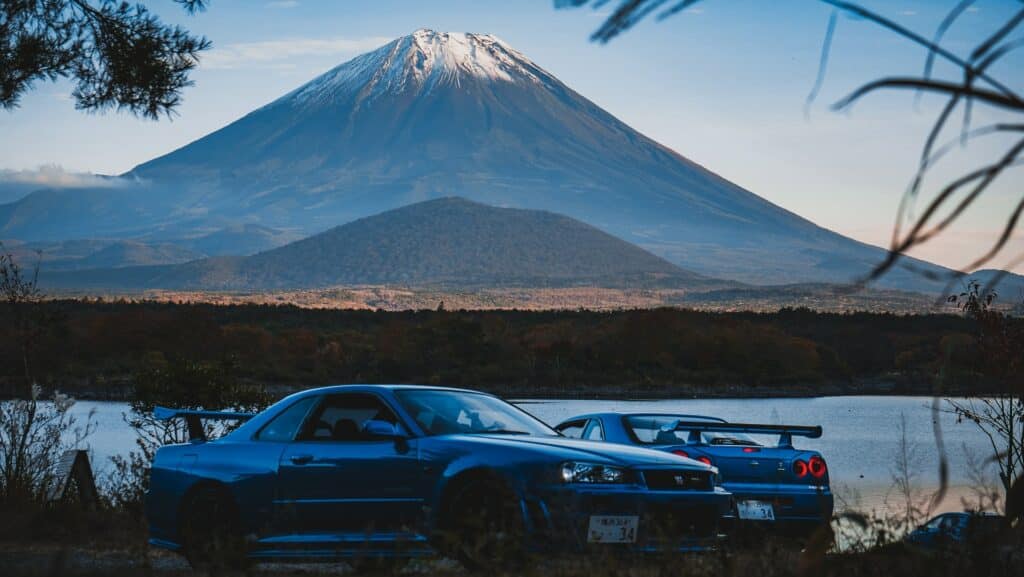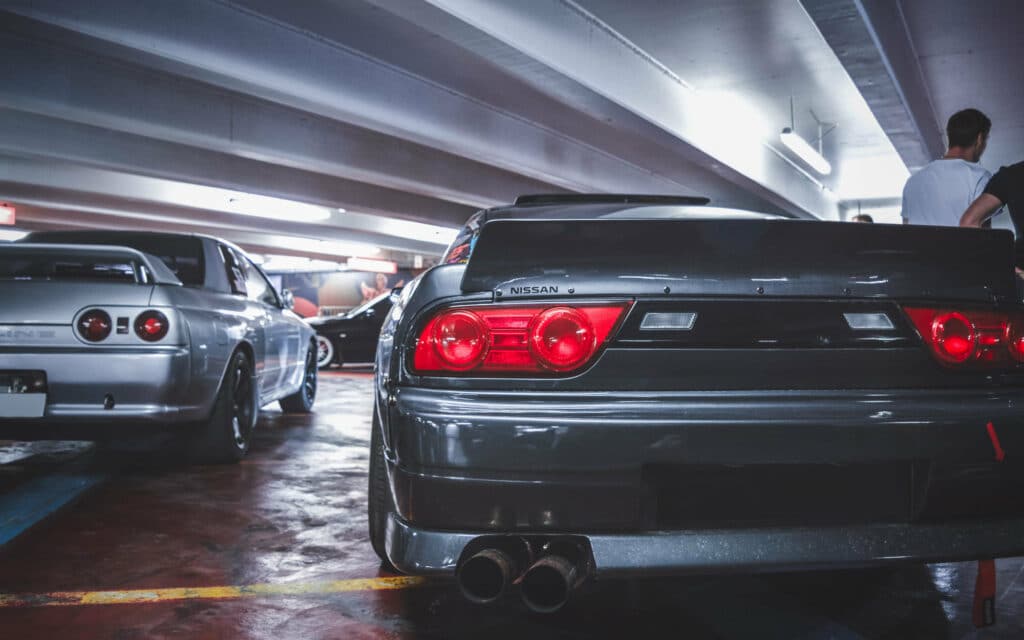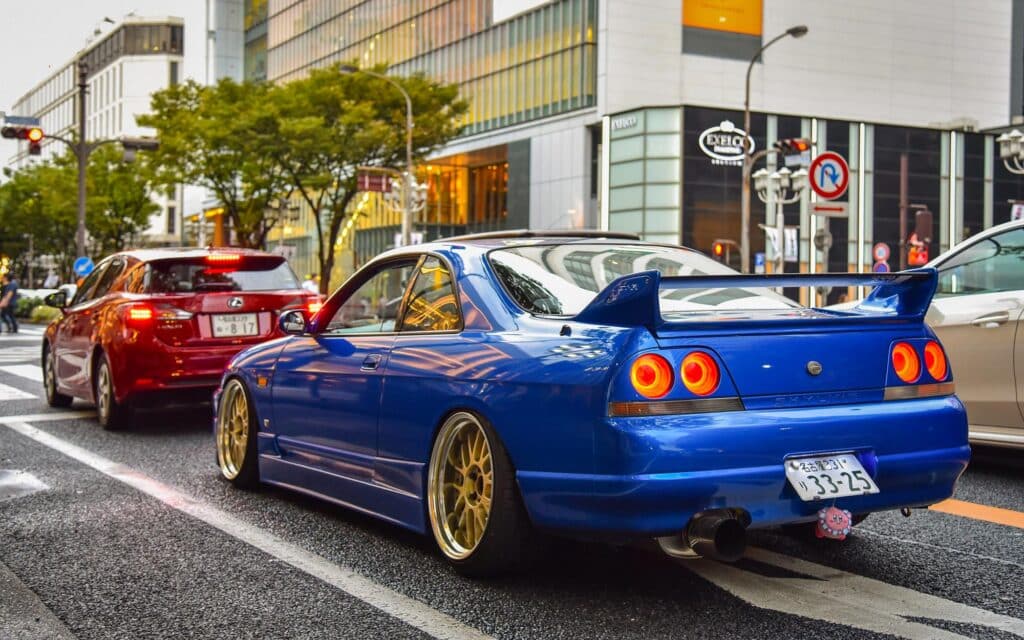To some, JDM is an art, and to others, it’s a lifestyle — a way of life that transcends beyond the traditional hobby and seeps into the category of perseverance and the pursuit of perfection.
It’s all about bringing out the best in a machine and making sure it performs at its maximum capability. No matter which way you look at it, there’s no denying that there’s something unmistakably unique about Japanese cars.
Japanese cars are known for effortlessly blending performance, reliability, and affordability, all in the same package.
But wait, are all Japanese cars JDM? What exactly is the difference? Stick around as we go deeper into the topic of JDM cars and culture.
In this guide, we’ll discuss what JDM is, how Japanese car culture started, and why it rose to popularity.
Let’s dive in.
What Makes a Car JDM?
Before we go ahead and dive into what JDM is all about, let’s answer two important questions:
- What does JDM mean? and
- What does the JDM acronym stand for?
JDM stands for Japanese Domestic Market, and it refers to cars that are sold only in Japan and the culture that surrounds them.

Not all Japanese cars can be categorized as “JDM”. Only those that are made by Japanese automakers specifically to be sold in Japan can be considered as JDM. That is, cars that meet:
- emissions standards,
- traffic laws, and
- other legal requirements of Japan.
What this means is that if you buy a brand new 370z Nismo edition in the US market, that doesn’t mean you’re buying a JDM car. It means you’re buying a J-Spec car.

But if you import the same car from Japan — one that’s designed specifically to be sold and driven within the international borders of Japan, that’s JDM.
This isn’t necessarily a bad thing. If you own a J-Spec Civic, there’s nothing stopping you from buying JDM parts making it look the part. Purists might argue that it’s not the “right thing to do”, but who cares? It’s your car, you can do whatever you want with it.
Many of the cars we’ve mentioned in our best JDM cars article were sold in Japan and also in the US. You can either buy locally or you can import directly from Japan. The latter would be the right way to do it if you want an authentic JDM vehicle.
But that will also mean that it’s going to be right-hand drive, and it might not pass many US-specific emissions standards, and it will require modifications.
What is JDM? — Dissecting the Subculture
JDM culture means different things to different people. To some it’s art, to others it’s a lifestyle. Some even dislike it, and some pretend to like it just to fit in.

Regardless of which end of this spectrum you’re on, there’s no denying that there’s something magnetic about JDM culture as a whole.
Love it or hate it, you’re still going to turn your head at that yellow Supra as it blasts down the street. That said, there’s a lot more to JDM culture than 1000whp Supras, Skyline drift builds, and cambered Silvias.
Look beyond the stereotypes and it becomes clear that the petrolheads of Japan seem to adore anything and everything on four wheels.
Their obsession with guarding, perfecting, and enforcing their cultural uniqueness is the reason why there’s so much diversity in the Japanese car scene.

For instance, here’s a short list of some of the most popular Japanese car subcultures:
- Bosozoku: Balls to the wall crazy body kits + tall, vertical exhaust pipes
- Onikyan: Demon camber — excessively cambered wheels
- Itasha: Anime-wrapped Japanese cars
- Dekotora: Over-the-top decorated trucks
- Dajiban: Tricked out Dodge Vans designed to haul motorcycles around
- Shakotan: Lowered cars with wide over-fenders and massive intercoolers
- Kyusha: Old, lightly and tastefully modified Japanese cars
- Kanjozoku: One-make-championship style Honda Civics used by teams like No Good Racing
And this is barely scratching the surface.
But we’re not here to discuss the Bosozoku or other outlandish subcultures. We want to know what made Japanese tuner cars so popular.
The Rise of JDM Cars — How It Happened
Every culture has a starting point — an optimal balance of circumstances that give it the initial push, after which it snowballs into something much bigger and keeps taking on newer shapes as it travels across the world, adapting to new environments.
Something similar happened with JDM culture as we know it today. Its roots can be traced down to:
- Three important events that took place in automotive history, and
- The right balance of circumstances that caused it to receive international recognition.
Here’s our take on some of the factors that propelled the evolution of Japanese streetcars and JDM tuner culture as we know it today.
The JDM Gentlemen’s Agreement
Horsepower wars — ever heard of that? It’s when car manufacturers engage in a game of one-upmanship by constantly trying to out-power each other. This causes companies to shift focus from what’s important to pure number-chasing.
Many years ago German car manufacturers were (and still are) doing this. They were constantly trying to get higher horsepower from their engines.
Japanese manufacturers took notice and informally agreed not to play this game for two important reasons:
- To avoid an unnecessary power war
- To keep the streets of Japan Safe
This idea was proposed by the Japanese Automotive Manufacturers Association, and it took shape in the form of speed limiters and detuned engines that max out at 276 hp — even though they were capable of more.
This was an opt-in program. The following cars were initially launched with the 276 horsepower badge:
- R32 Skyline
- R33 Skyline
- Nissan 300ZX
- Mitsubishi Lancer Evo 6
- Mitsubishi 3000 GT
- Subaru Impreza 22B STI
- Toyota Supra MK4
- Acura NSX
Even though this was real on paper but a lie in practice, it did push the aftermarket scene in the right direction.

To get around this perceived power limit, everybody and their grandmas were interested in increasing power with the help of aftermarket upgrades.
By the mid-to-late-’90s, as safety features like airbags, pre-tensioner seat belts, and antilock brakes were introduced, road fatalities began to drop, making some wonder whether horsepower really had anything to do with it.
Eventually, this pact was dropped. JAMA had found no relationship between speed and road fatalities.
Japan’s Economic Boom
Throughout the 1980s, Japan was experiencing a financial bubble. The post-WWII economy had encouraged Japanese citizens to save money, causing a massive surplus in savings. Thanks to that, the banks had no problem meeting their reserve requirements and so they engaged in very lenient lending behavior.
There were also many government programs that intended to weaken the US dollar against the Japanese Yen through means of financial deregulation. This, combined with the excess liquidity led to the biggest economic boom the country had ever seen. Domestic stock prices were through the roof.
This basically meant that many citizens of Japan could afford to spend a ton of money. This incentivized automakers to make bigger, better, more powerful cars, and that’s exactly what they did.
Enter JDM tuner icons — Silvias, Skylines, (MK3) Supras, AE86s, RX-7s, Starlets, and many more.

These were some of the most powerful sports cars the country had to offer, and they sold like hotcakes. In the grand scheme of things, Japan’s economic boom added fuel to the fire that we know as JDM culture today.
Japan’s Vehicle Inspection Standards
Japan has ridiculously strict annual inspection standards for the maintenance of road vehicles — the need for Japanese drivers to maintain and preserve their cars in order for them to be allowed on public roads.
This need, however, becomes increasingly expensive as a car gets older and has a year-on-year depreciative effect that ultimately leads to its destruction or exportation.
With high maintenance rates, relatively short shelf life, and high disposal fees on vehicles, Japanese drivers were incentivized to sell their cars for export as they get older instead of demolishing them domestically.
This, combined with the 70s gas crisis in the USA led to a sudden influx of Japanese cars into the American market.
JDM Life in Pop Culture
Pop culture and mainstream media were the fuel that the tuner scene needed to explode into popularity.
With the release of car games like Need for Speed and Gran Turismo, and mangas such as Initial D and Shakotan Boogie, the culture gained wider recognition.

It really went mainstream with the Fast and the Furious, and other racing movies. A culture grew up around JDM cars that was young and vibrant — very different from that of other car subcultures.
Many argue that it was pop culture, more than anything else, that contributed towards giving JDM cars the “coveted” status.
Tuner Friendly Engines
Lastly, Japanese cars are designed in a way that even inexperienced technicians could install modifications and perform engine swaps. They’re foolishly easy to work on — as compared to other German, European, and American cars.
Spares are cheap and readily available thanks to the many aftermarket companies that make them. Servicing is relatively cheap, with qualified mechanics and tuning workshops everywhere.
The ease with which these cars can be upgraded and tuned is the reason why so many street racers in America ditched the big block V8s and moved on to the import tuner segment.
JDM For the Win
So that was our primer on JDM cars and culture. Don’t forget to check out our article on the top 20 JDM cars you can buy — in there you’ll find a list of some of the most popular options, and some hidden gems too.

If these cars speak to you, and if you’ve always wanted to own one but didn’t know where to start, information like this can really help point you in the right direction.
What’s your take on JDM? Do you find it overrated or inspiring? Let us know by leaving a comment below!


2 comments
After living and working in Tokyo for 4+years (1988+1992+), and having bought a new 1991 Nissan 240SX XE with Canadian regulations included along with the JDM rules, I am a big supporter of this Japanese car.
I brought it home to British Columbia in 1993 and it is now 2021 and still in great shape (54k Mph). However, the time has come to turn it over to someone else and it is now on the BaT auction block waiting for the next lucky owner!
VTEC done changed the game.